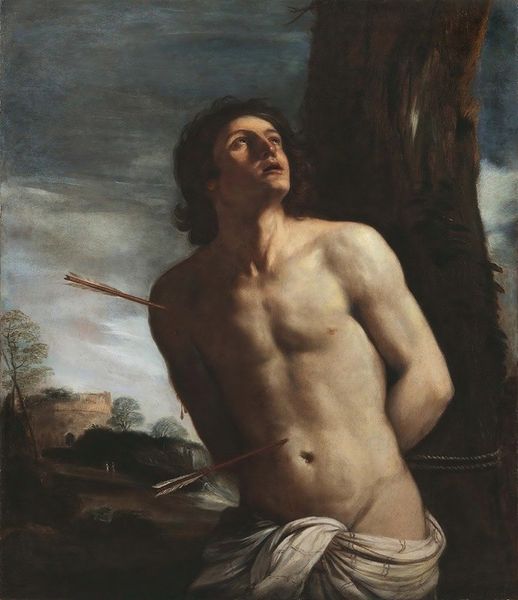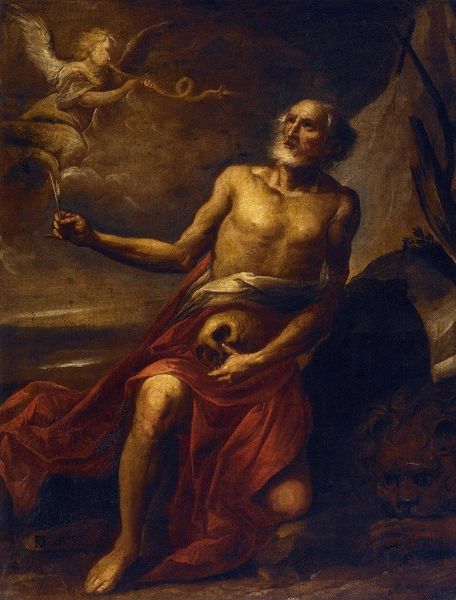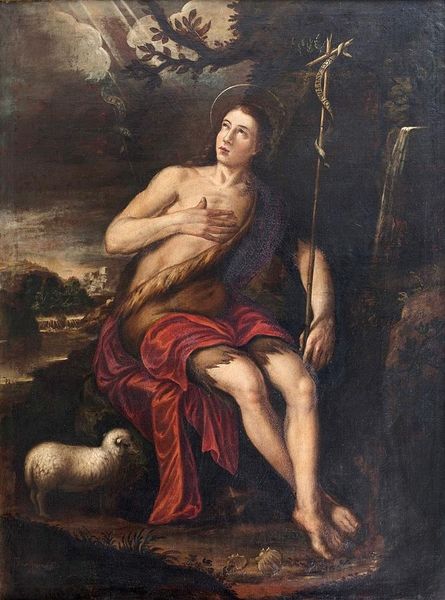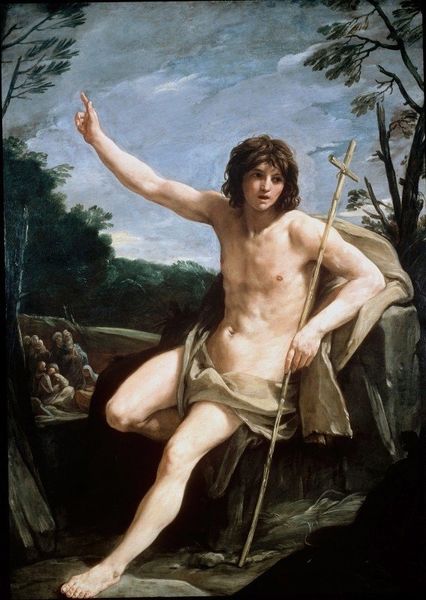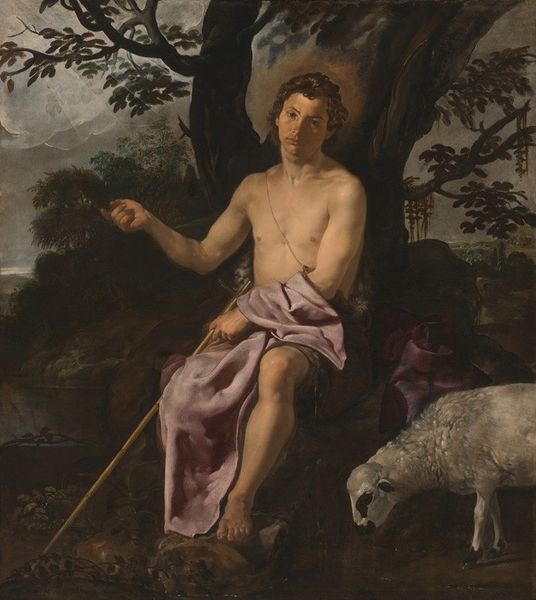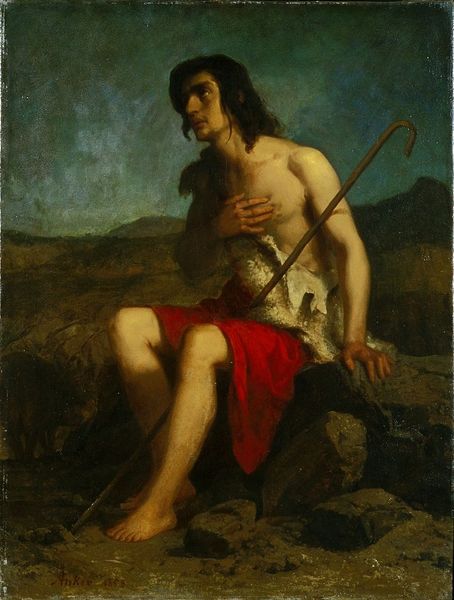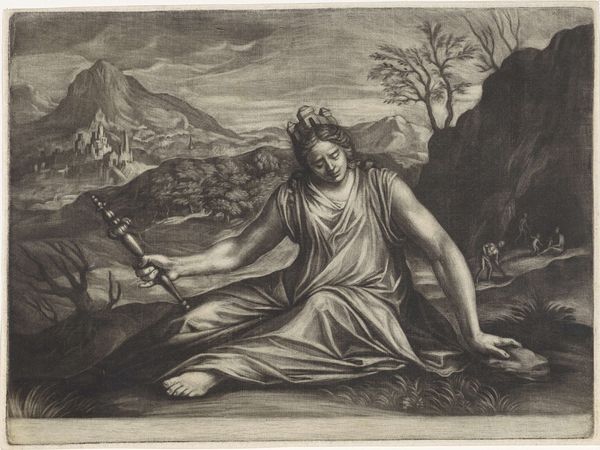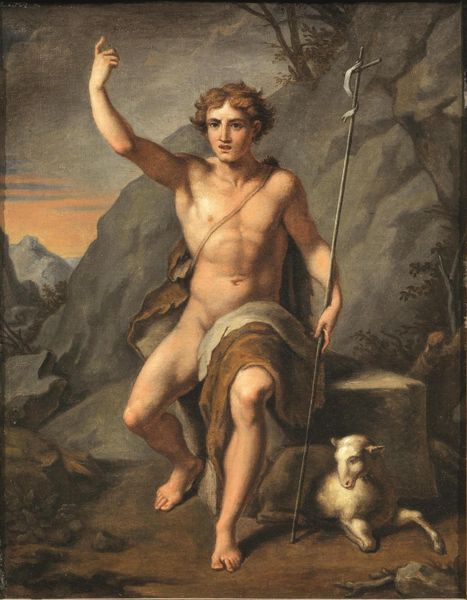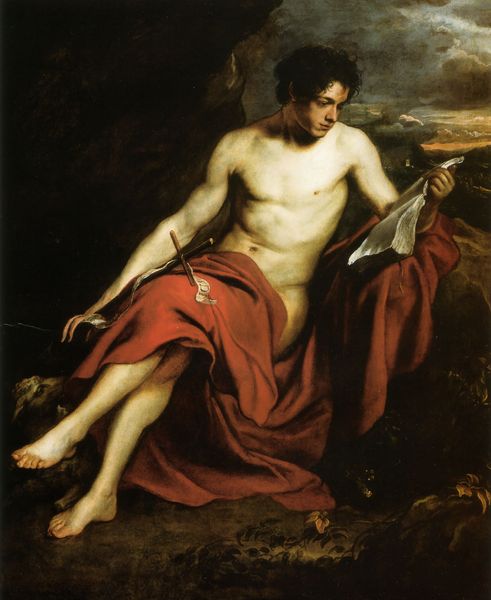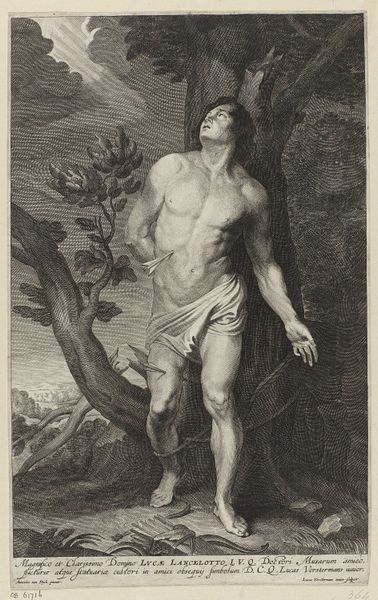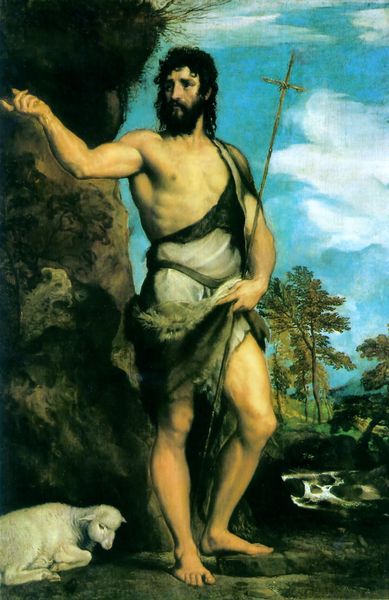
#
charcoal drawing
#
possibly oil pastel
#
portrait reference
#
portrait head and shoulder
#
underpainting
#
animal drawing portrait
#
portrait drawing
#
portrait art
#
fine art portrait
#
digital portrait
Dimensions: 161.5 x 104.5 cm
Copyright: Public domain
Curator: Here we see "The Prodigal Son Among the Swine," a moving oil on canvas by Bartolomé Estebán Murillo, painted around 1665. Editor: The sheer pathos leaps out at you. His emaciated frame, the desperation in his upward gaze… it’s intensely unsettling. Curator: Absolutely. Murillo, painting during the Spanish Golden Age, was deeply engaged with social issues, particularly poverty and inequality. This artwork portrays the biblical parable, offering a lens into issues of destitution, but also societal redemption in seventeenth century Seville. The material destitution of the subject as portrayed really pushes you to face difficult questions. Editor: Look at the staff he’s holding; a traditional symbol of pastoral care, of leadership, utterly subverted here. He’s reduced to this… shepherd among swine. His tattered clothes symbolize a complete break from his former identity and place in society. The broken staff perhaps signaling a sort of death of leadership Curator: It underscores the immense power held by the paterfamilias in that period; and his rejection represents societal suicide. Furthermore, the son being surrounded by the swine connects the historical period, which commonly connected marginalized individuals, such as Jewish individuals, to swine and uncleanliness. The scene reflects the discrimination such peoples might face. Editor: The darkness surrounding the figures adds to this reading. But the break of light around his head gives a sense of hope and redemption. The contrast heightens his intense focus. He still believes, still has hope for forgiveness, so he looks toward heaven. Curator: And we, as viewers, are made complicit. Where do we stand within his social narrative, as it moves through generations? How do we grapple with his past actions, his father's wealth, and his eventual need for mercy? Editor: Indeed. This painting serves as a potent reminder that even in our lowest moments, hope, faith, and, critically, societal empathy remain potent symbols. The path back from absolute despair is still one marked by iconic beliefs in kindness and compassion. Curator: Yes, and for me, seeing it forces reflections on power dynamics within families and societies and the challenges of those seeking grace after periods of self-imposed or imposed exile.
Comments
No comments
Be the first to comment and join the conversation on the ultimate creative platform.
